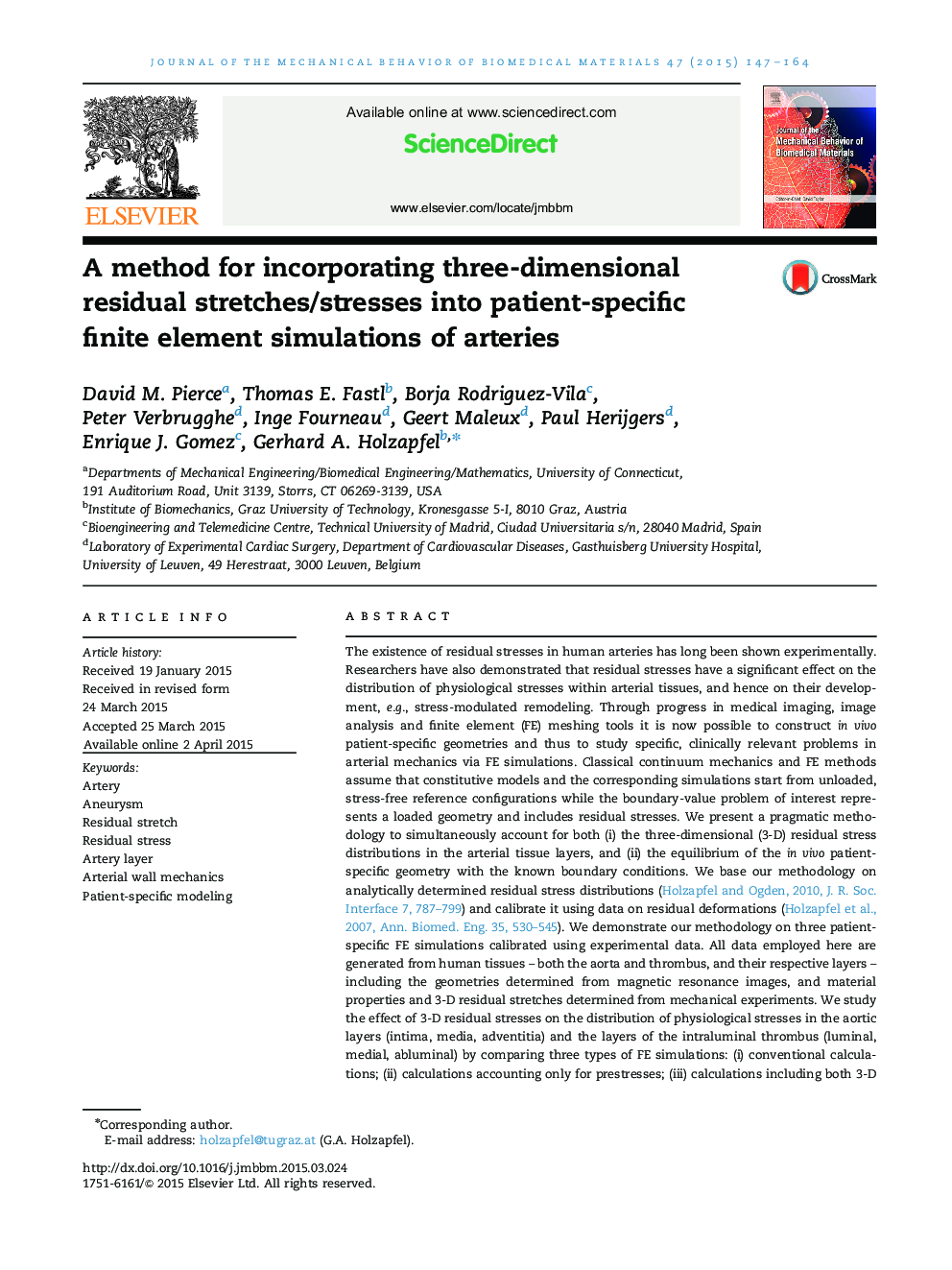| کد مقاله | کد نشریه | سال انتشار | مقاله انگلیسی | نسخه تمام متن |
|---|---|---|---|---|
| 810690 | 1469098 | 2015 | 18 صفحه PDF | دانلود رایگان |
The existence of residual stresses in human arteries has long been shown experimentally. Researchers have also demonstrated that residual stresses have a significant effect on the distribution of physiological stresses within arterial tissues, and hence on their development, e.g., stress-modulated remodeling. Through progress in medical imaging, image analysis and finite element (FE) meshing tools it is now possible to construct in vivo patient-specific geometries and thus to study specific, clinically relevant problems in arterial mechanics via FE simulations. Classical continuum mechanics and FE methods assume that constitutive models and the corresponding simulations start from unloaded, stress-free reference configurations while the boundary-value problem of interest represents a loaded geometry and includes residual stresses. We present a pragmatic methodology to simultaneously account for both (i) the three-dimensional (3-D) residual stress distributions in the arterial tissue layers, and (ii) the equilibrium of the in vivo patient-specific geometry with the known boundary conditions. We base our methodology on analytically determined residual stress distributions ( Holzapfel and Ogden, 2010, J. R. Soc. Interface 7, 787–799) and calibrate it using data on residual deformations (Holzapfel et al., 2007, Ann. Biomed. Eng. 35, 530–545). We demonstrate our methodology on three patient-specific FE simulations calibrated using experimental data. All data employed here are generated from human tissues – both the aorta and thrombus, and their respective layers – including the geometries determined from magnetic resonance images, and material properties and 3-D residual stretches determined from mechanical experiments. We study the effect of 3-D residual stresses on the distribution of physiological stresses in the aortic layers (intima, media, adventitia) and the layers of the intraluminal thrombus (luminal, medial, abluminal) by comparing three types of FE simulations: (i) conventional calculations; (ii) calculations accounting only for prestresses; (iii) calculations including both 3-D residual stresses and prestresses. Our results show that including residual stresses in patient-specific simulations of arterial tissues significantly impacts both the global (organ-level) deformations and the stress distributions within the arterial tissue (and its layers). Our method produces circumferential Cauchy stress distributions that are more uniform through the tissue thickness (i.e., smaller stress gradients in the local radial directions) compared to both the conventional and prestressing calculations. Such methods, combined with appropriate experimental data, aim at increasing the accuracy of classical FE analyses for patient-specific studies in computational biomechanics and may lead to increased clinical application of simulation tools.
Journal: Journal of the Mechanical Behavior of Biomedical Materials - Volume 47, July 2015, Pages 147–164
